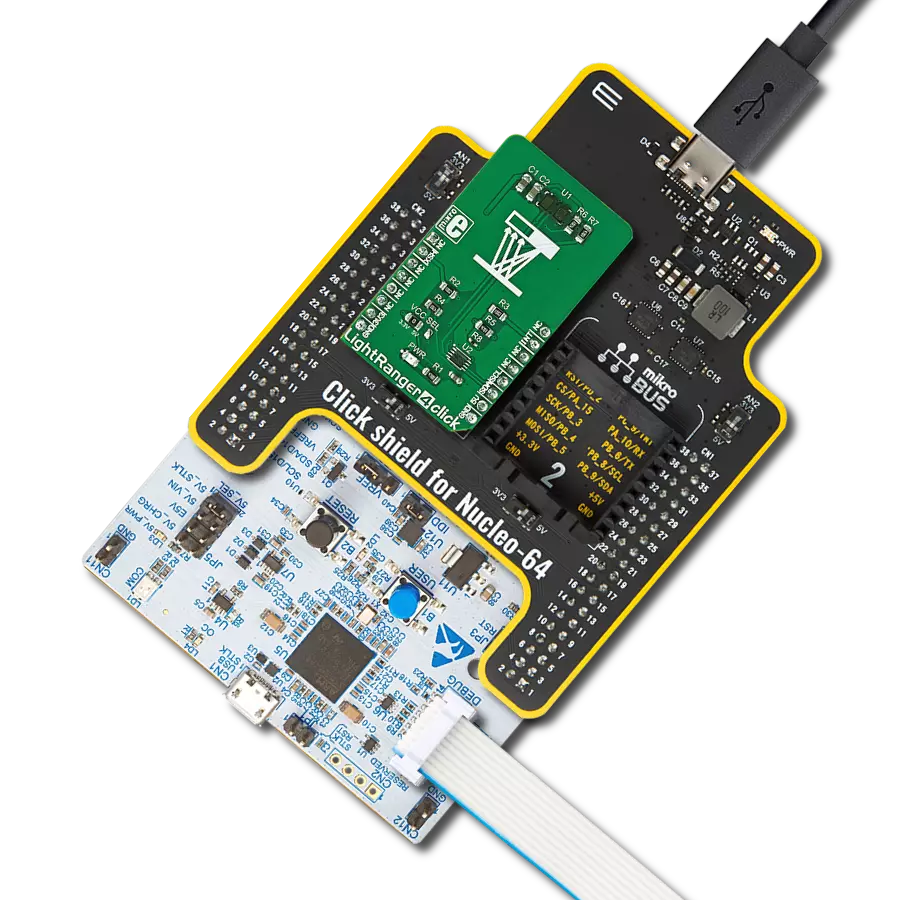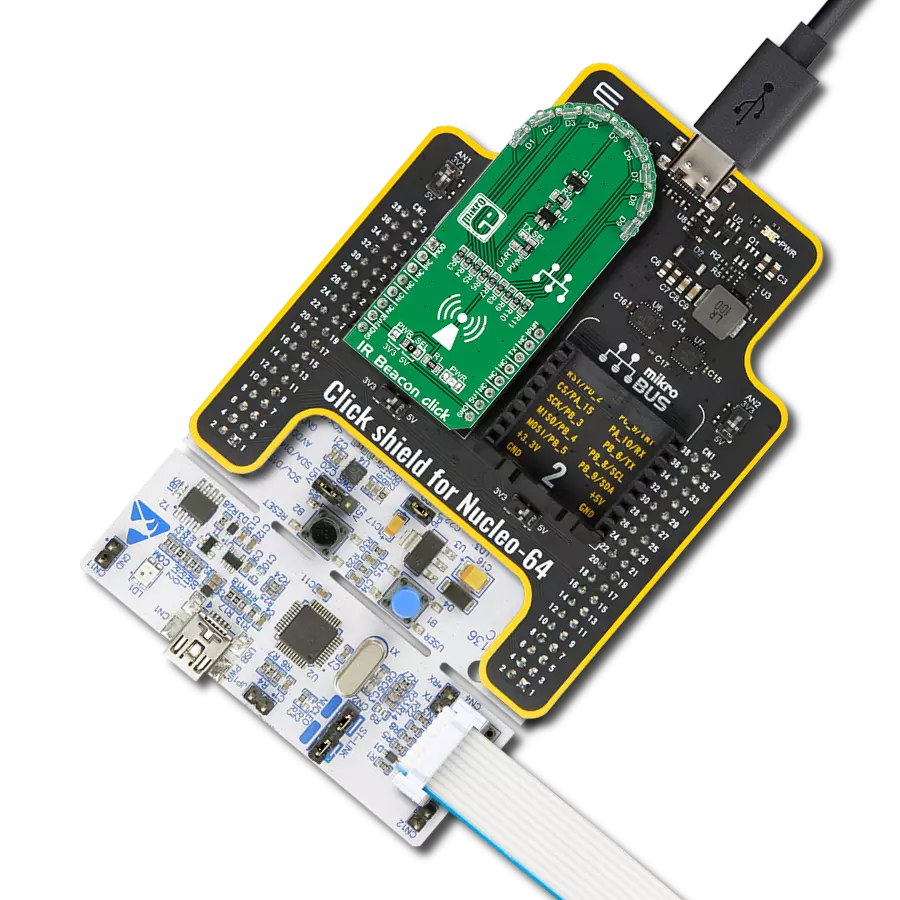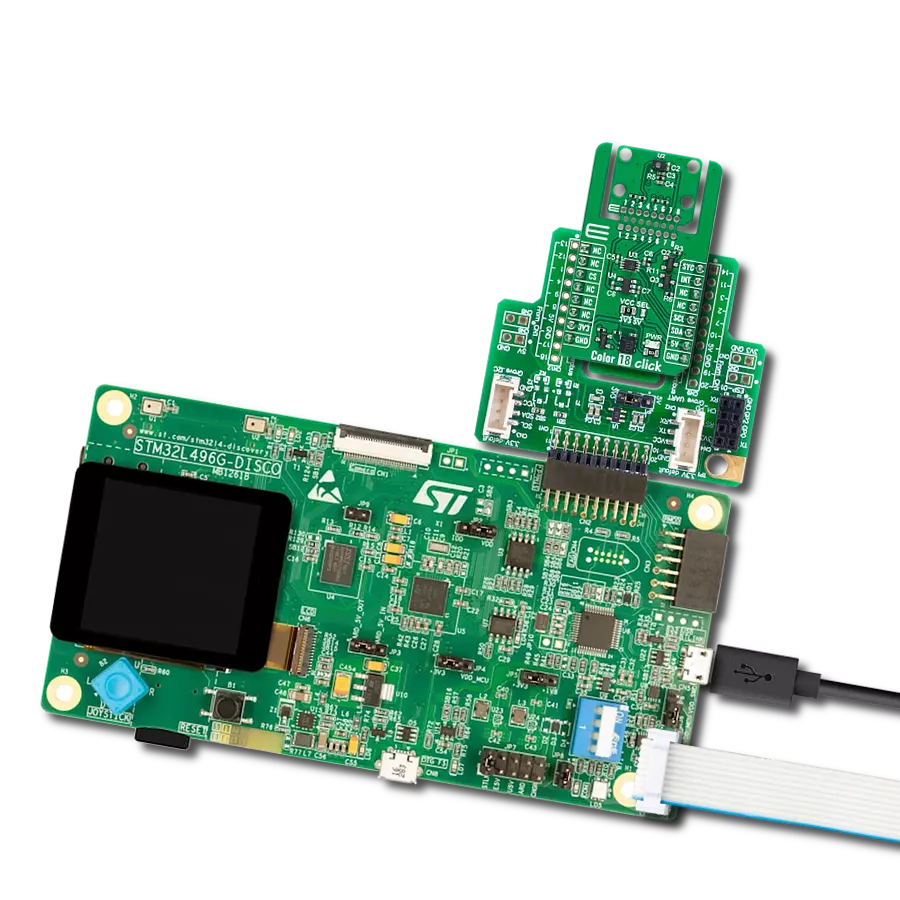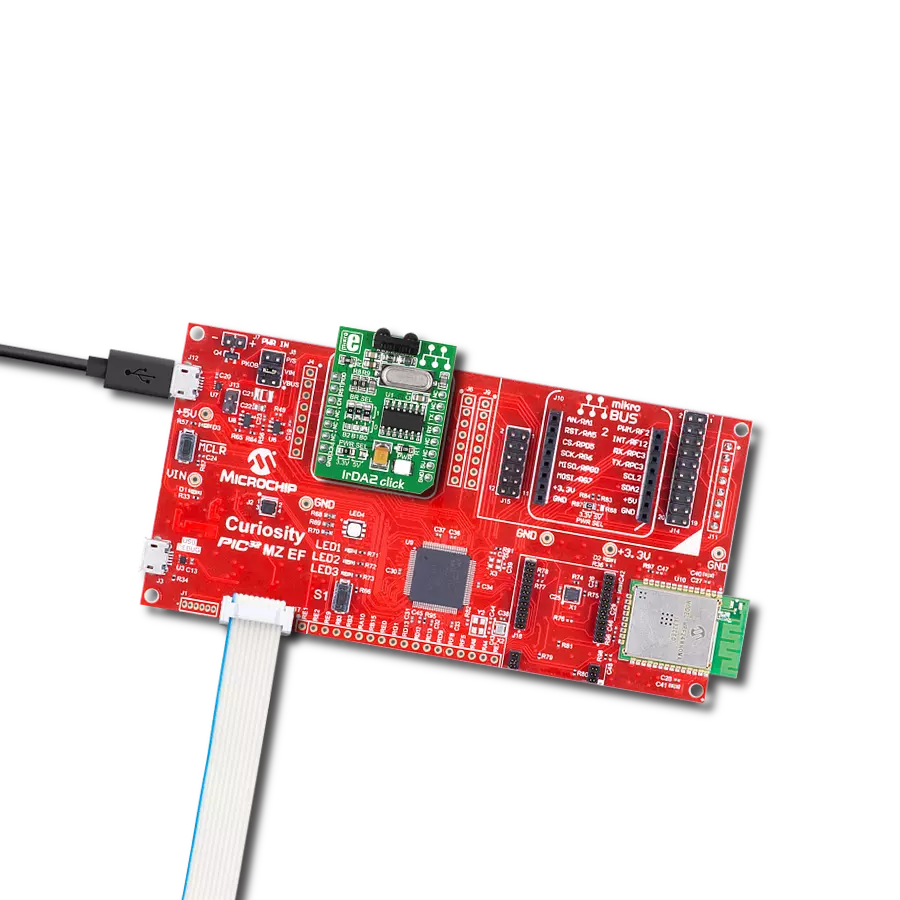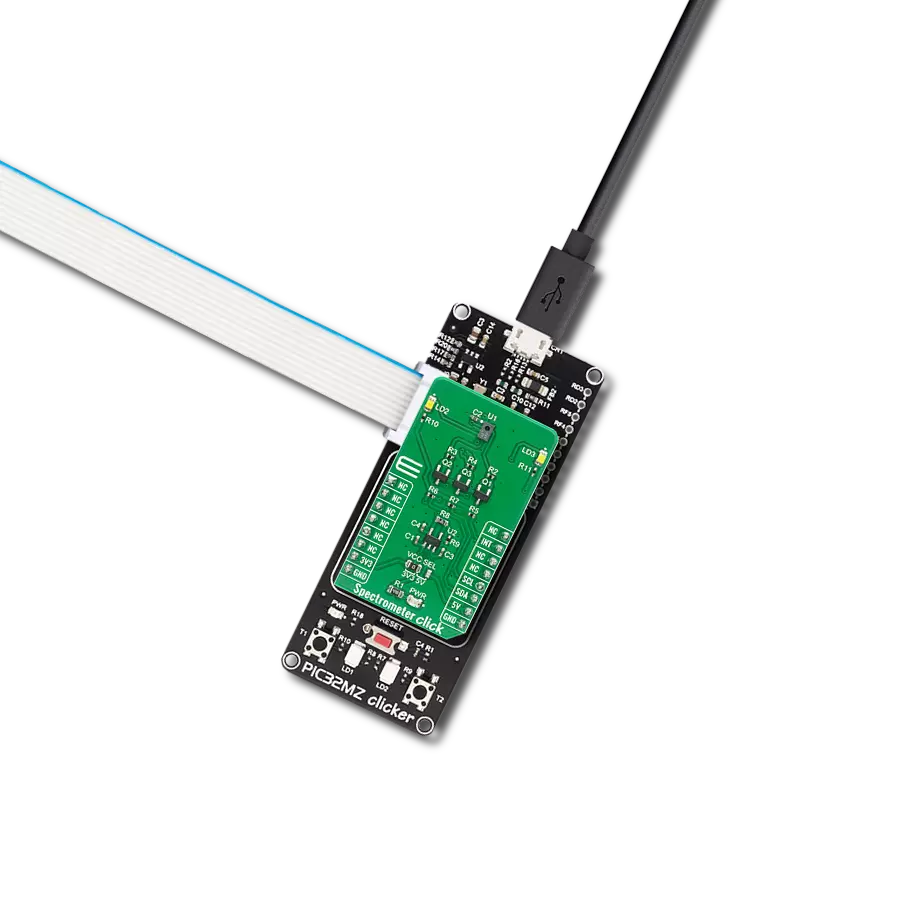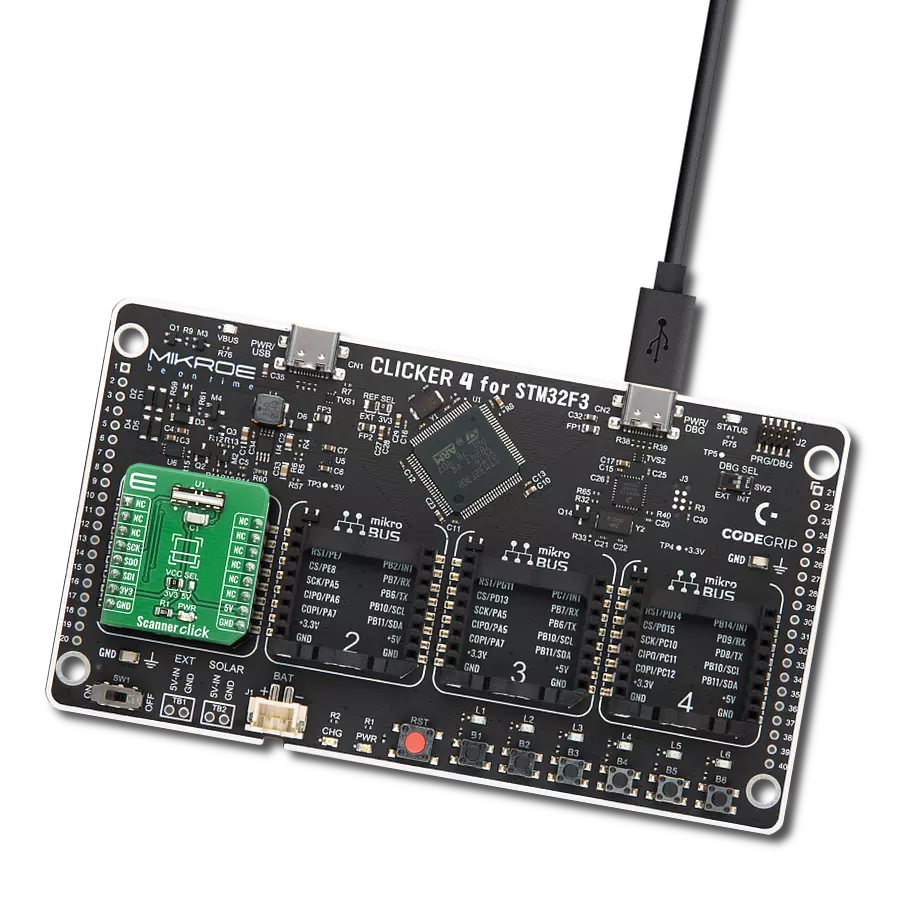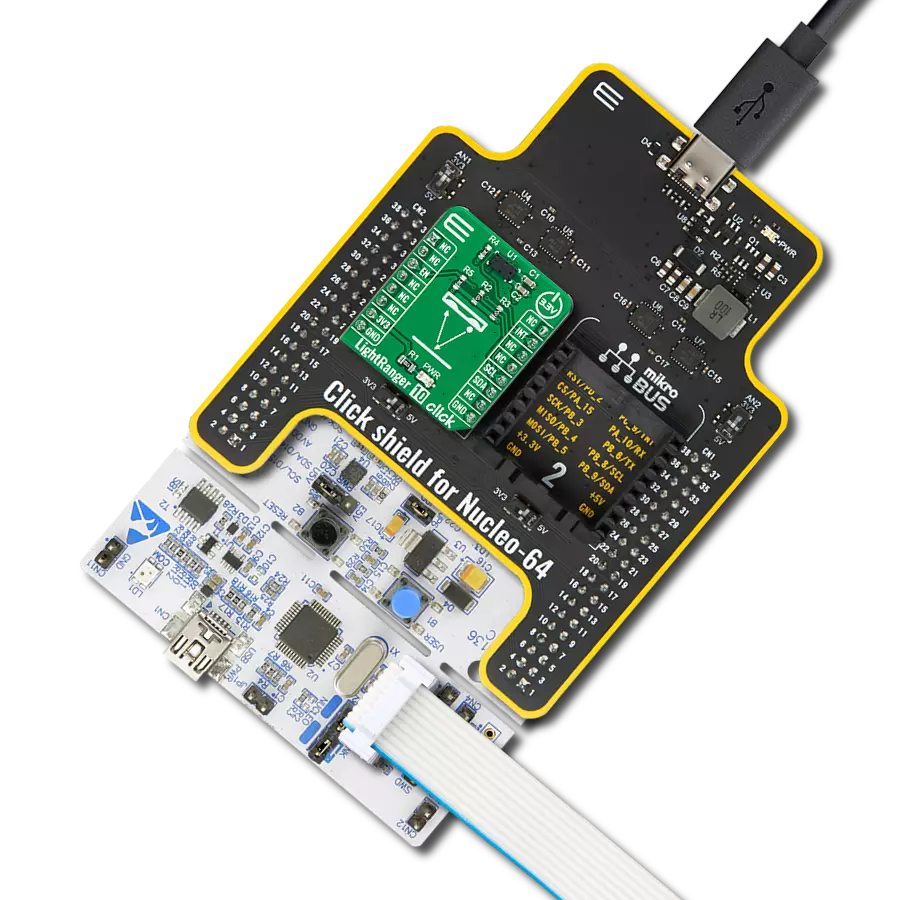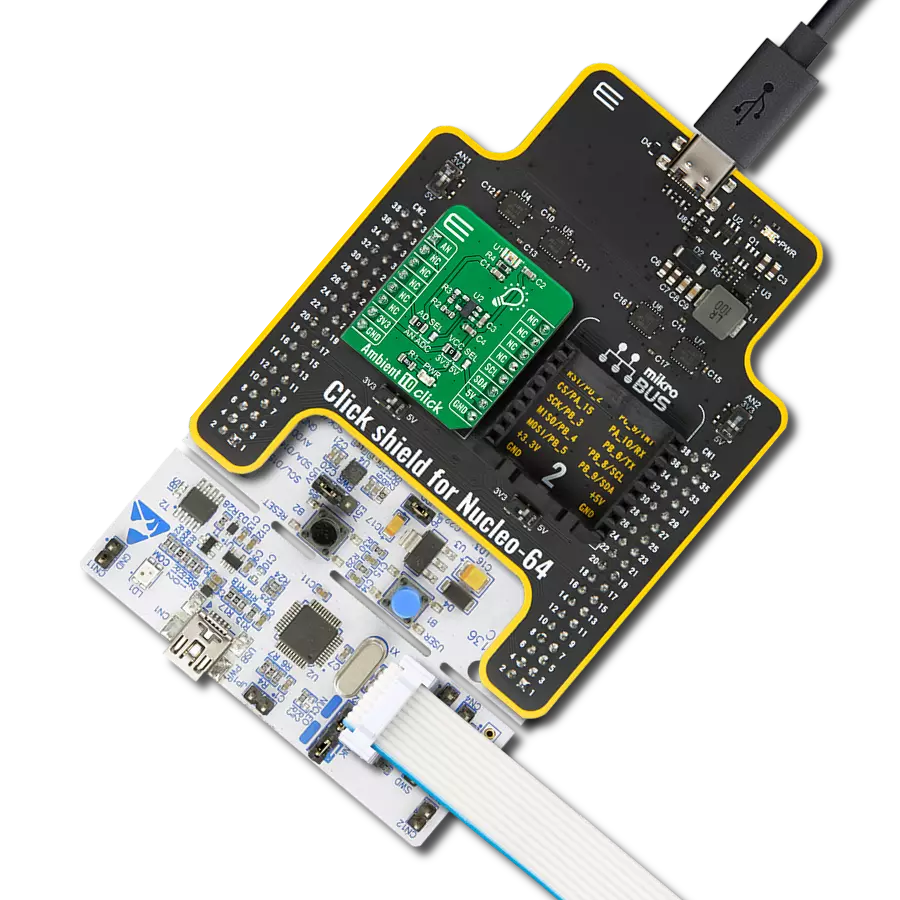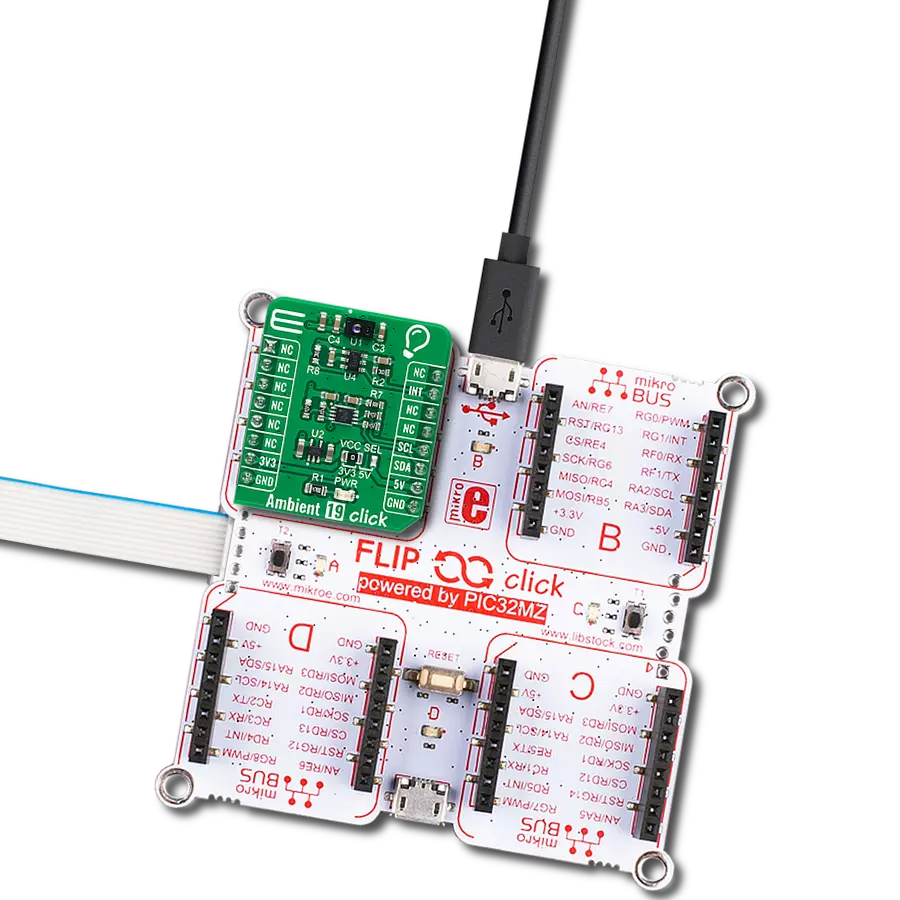Get precise indoor/outdoor light adjustment for better energy use and comfort
A
A
Hardware Overview
How does it work?
Light 3 Click is based on the OPT4003-Q1, an automotive-grade digital ambient light sensor from Texas Instruments. This component is specifically designed for use in various automotive applications, including but not limited to interior and exterior lighting systems, entertainment and dashboard clusters, adaptive mirrors, rain-sensing wiper systems, head-up displays, and automotive camera setups. Central to its design, the OPT4003-Q1 sensor incorporates a dual-channel functionality that accurately captures and converts light from visible and near-infrared (NIR) spectrums into digital signals. The sensor's visible light detection is fine-tuned with a unique filter miming the human eye's response, ensuring precise visible light measurement by eliminating NIR interference. Conversely, its NIR channel is optimized to filter out visible light, focusing on capturing NIR light with a high degree of accuracy, marked by a clear cutoff at 800nm. This sensor outputs measurements in a semi-logarithmic scale featuring binary logarithmic scales for full light intensity range coverage. The visible light detection channel offers nine binary
light ranges, ranging from 535μlux to 143klux, with an effective dynamic range of 28 bits. On the other hand, the NIR channel spans seven light ranges, from 565pW/cm2 to 38mW/cm2, and delivers a 26-bit dynamic range. Its automatic range selection capability dynamically adjusts gain based on ambient light levels, ensuring optimal resolution without requiring manual adjustments.
The OPT4003-Q1 also includes sophisticated optical filters that provide exceptional out-of-band light rejection, which is crucial for maintaining accurate light measurements under various conditions, including under tinted glass. It is an ideal replacement for traditional light sensing solutions like photodiodes and photoresistors, which generally need more precision, dynamic range, and NIR filtration. The device offers flexible configuration options, with light conversion times adjustable between 600μs and 800ms across 12 steps to accommodate different application requirements. The OPT4003-Q1 supports both continuous and single-shot measurement modes. It incorporates threshold detection, enabling
energy-efficient operation by allowing the processor to remain in low-power states until a significant light change occurs. Communication with the sensor is achieved via an I2C-compatible interface, with a built-in FIFO buffer ensuring data integrity during slower readout periods. Besides I2C pins, the device allows the adjustment of its I2C slave address's least significant bit via an SMD jumper marked as ADDR SEL. This board also has an interrupt reporting system (INT pin) that allows the host MCU connected to the I2C bus to sleep or otherwise ignore the device results until a user-defined event occurs that requires possible action. This Click board™ can operate with either 3.3V or 5V logic voltage levels selected via the VIO SEL jumper. This way, both 3.3V and 5V capable MCUs can use the communication lines properly. Also, this Click board™ comes equipped with a library containing easy-to-use functions and an example code that can be used as a reference for further development.
Features overview
Development board
Curiosity PIC32 MZ EF development board is a fully integrated 32-bit development platform featuring the high-performance PIC32MZ EF Series (PIC32MZ2048EFM) that has a 2MB Flash, 512KB RAM, integrated FPU, Crypto accelerator, and excellent connectivity options. It includes an integrated programmer and debugger, requiring no additional hardware. Users can expand
functionality through MIKROE mikroBUS™ Click™ adapter boards, add Ethernet connectivity with the Microchip PHY daughter board, add WiFi connectivity capability using the Microchip expansions boards, and add audio input and output capability with Microchip audio daughter boards. These boards are fully integrated into PIC32’s powerful software framework, MPLAB Harmony,
which provides a flexible and modular interface to application development a rich set of inter-operable software stacks (TCP-IP, USB), and easy-to-use features. The Curiosity PIC32 MZ EF development board offers expansion capabilities making it an excellent choice for a rapid prototyping board in Connectivity, IOT, and general-purpose applications.
Microcontroller Overview
MCU Card / MCU

Architecture
PIC32
MCU Memory (KB)
2048
Silicon Vendor
Microchip
Pin count
100
RAM (Bytes)
524288
Used MCU Pins
mikroBUS™ mapper
Take a closer look
Click board™ Schematic
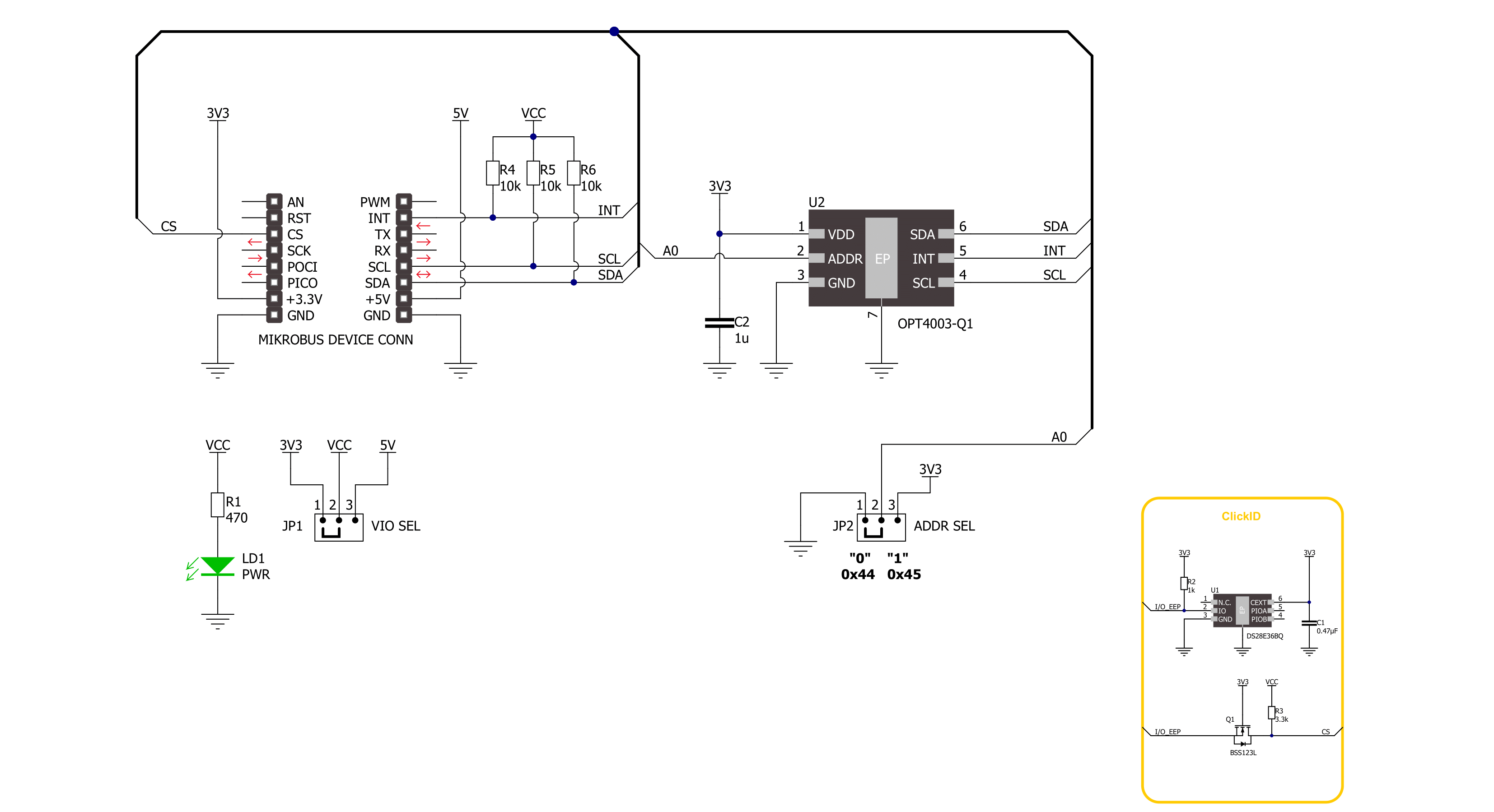
Step by step
Project assembly
Software Support
Library Description
This library contains API for Light 3 Click driver.
Key functions:
light3_sw_reset- This function is used to perform software resetlight3_write_reg- This function writes a desired data into the selected register by using I2C serial interfacelight3_get_ch0_data- This function reads ambient light data from the Channel 0 and performs the calculatios from raw data to Lux
Open Source
Code example
The complete application code and a ready-to-use project are available through the NECTO Studio Package Manager for direct installation in the NECTO Studio. The application code can also be found on the MIKROE GitHub account.
/*!
* @file main.c
* @brief Light 3 Click example
*
* # Description
* This example demonstrates the use of Light 3 Click board by measuring
* the ambient light level in Lux.
*
* The demo application is composed of two sections :
*
* ## Application Init
* Initializes the driver and performs the Click default configuration.
*
* ## Application Task
* Reading channel 0 ambient light level in lux as soon as it is available
* ( once in 1.6 seconds ) and displaying it on the UART terminal.
*
* @author Stefan Ilic
*
*/
#include "board.h"
#include "log.h"
#include "light3.h"
static light3_t light3;
static log_t logger;
void application_init ( void )
{
log_cfg_t log_cfg; /**< Logger config object. */
light3_cfg_t light3_cfg; /**< Click config object. */
/**
* Logger initialization.
* Default baud rate: 115200
* Default log level: LOG_LEVEL_DEBUG
* @note If USB_UART_RX and USB_UART_TX
* are defined as HAL_PIN_NC, you will
* need to define them manually for log to work.
* See @b LOG_MAP_USB_UART macro definition for detailed explanation.
*/
LOG_MAP_USB_UART( log_cfg );
log_init( &logger, &log_cfg );
log_info( &logger, " Application Init " );
// Click initialization.
light3_cfg_setup( &light3_cfg );
LIGHT3_MAP_MIKROBUS( light3_cfg, MIKROBUS_1 );
if ( I2C_MASTER_ERROR == light3_init( &light3, &light3_cfg ) )
{
log_error( &logger, " Communication init." );
for ( ; ; );
}
if ( LIGHT3_ERROR == light3_default_cfg ( &light3 ) )
{
log_error( &logger, " Default configuration." );
for ( ; ; );
}
log_info( &logger, " Application Task " );
}
void application_task ( void )
{
float lux_data = 0;
if ( LIGHT3_PIN_STATE_LOW == light3_get_int_pin( &light3 ) )
{
light3_get_ch0_data( &light3, &lux_data );
log_printf( &logger, "Light level: %f lux \r\n", ( float ) lux_data );
}
}
int main ( void )
{
/* Do not remove this line or clock might not be set correctly. */
#ifdef PREINIT_SUPPORTED
preinit();
#endif
application_init( );
for ( ; ; )
{
application_task( );
}
return 0;
}
// ------------------------------------------------------------------------ END

















